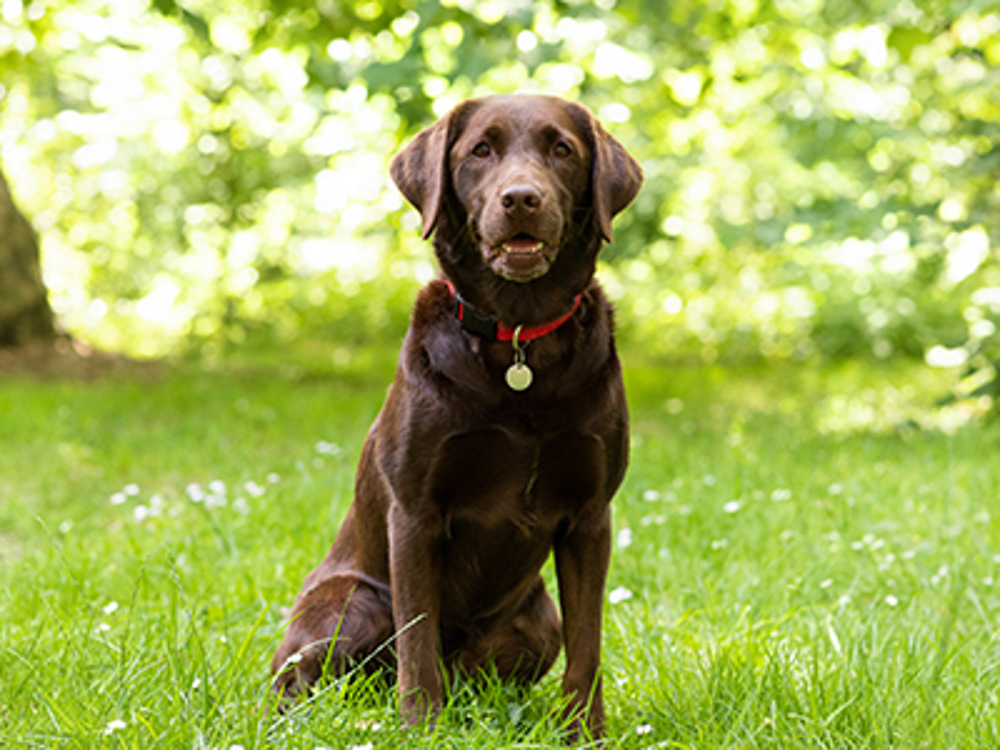
Teaching your dog to sit is relatively easy, if you have something the dog likes, such as a treat or a toy to motivate and praise your dog. If treats are used, please remember to take them out of your dog’s daily food rations and grade them according to your dog’s stage of learning, and/or the environment.
Asking the dog to sit is useful in everyday life, as it enables you to control them a little more easily when doing things like putting down their food bowl, putting their lead on, or even when waiting at the kerb to cross the road.
Steps to teaching your dog to sit
- Choose a quiet place in your home to enable the dog to concentrate
- Start with the dog near to you and facing you - you may consider using a lead for more control, if the dog is inclined to wander off
- Get your dog’s attention by using their name
- Make sure that you have something in your hand that your dog wants, such as a treat or toy, and place that hand just above your dog’s nose
- Move your hand slowly in an arc, up and back over your dog’s head so that the dog follows it with his nose, and as their head goes up, their bottom will come down to the floor - like a seesaw
- As soon as your dog sits – they need rewarding for doing the right thing, so say ‘yes’, smile at them, praise them with your voice, stroke them, whilst also giving them the treat or a game with the toy
- Once your dog has the idea of sitting when you move your hand over their head with the treat lure, place your treat or toy in your other hand, but otherwise repeat everything you did before, so the dog is learning to perform the behaviour on a hand signal alone
- Once the dog is reliably performing the sit when you move your hand back over their head, start using the word ‘sit’, just before the hand movement. After a few repetitions, begin to reduce the hand movement, so that the dog is learning to be able to perform the sit just when you say the word ‘sit’. Fade the hand signal out altogether by saying the word ‘sit’ and just waiting a second for your dog to sit. If they don't, they are not yet ready for the hand signal to be removed altogether. Be ready to back up the word 'sit' with the hand signal, to ensure your dog still gets it right, so the dog is learning to perform the behaviour on a verbal cue
- To teach the dog to sit longer - keep the smile and verbal praise going, but withhold the treat or toy for a second or two until you are ready, not forgetting the release word ‘yes’ or ‘ok’ as you give them. Don’t push your dog too far too fast. Just aim for a few seconds at a time only – you don’t want your dog to get up before you are ready to release them
- To teach the dog to sit still when you are short distance away from them, start taking a step or two away from them, immediately returning to reward them in position
- To make it more difficult, start increasing the distractions around your dog or change your position in relation to your dog, or by asking them to sit when out in your garden or on a walk. You may have to go back to the beginning and re-teach with these changes
- To make the sit really useful, re-teach in a variety of environments until the dog really gets the idea that the word ‘sit’ means the same wherever they are, and that they should stay in the sit position until released – you can really have some fun with this, with a bit of imagination, which will help your control when out in public and faced with other dogs and people
Please note: there are many different ways to train your dog. This is just one method of teaching. If you are ever in doubt, please seek professional advice.
For more information and advice, you can find training classes with The Kennel Club Good Citizen Dog Training scheme, browse our full list of The Kennel Club Accredited Instructors or find a dog training club near you.
